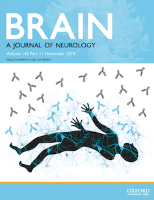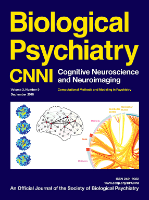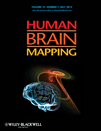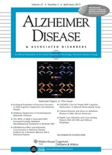
BRAIN
Scope & Guideline
Pioneering Research at the Intersection of Neurology and Medicine
Introduction
Aims and Scopes
- Neurodegeneration and Cognitive Decline:
Research focusing on the mechanisms of neurodegenerative diseases such as Alzheimer's and their impact on cognitive functions in aging populations. - Brain Aging Mechanisms:
Investigations into biological and physiological changes associated with aging in the brain, including structural and functional alterations. - Neuroimaging and Biomarkers:
Utilization of advanced neuroimaging techniques and biomarker analysis to study brain health and disease progression in aging individuals. - Interventions and Therapeutics:
Studies exploring therapeutic interventions, lifestyle modifications, and rehabilitation strategies aimed at mitigating cognitive decline and enhancing brain health. - Psychosocial Factors and Brain Health:
Examination of how psychological, social, and environmental factors influence brain aging, cognitive resilience, and overall mental health.
Trending and Emerging
- Precision Medicine Approaches:
An emerging focus on personalized medicine strategies, particularly in the context of dementia and Alzheimer's, emphasizing tailored interventions based on individual biological profiles. - Interdisciplinary Research on Aging:
Increased collaboration across disciplines, incorporating insights from psychology, neuroscience, and social sciences to address complex aspects of aging and brain health. - Technological Innovations in Neuroimaging:
A trend towards utilizing advanced neuroimaging technologies to better understand brain structure and function in aging populations, enhancing diagnostic capabilities. - Role of Physical and Mental Interventions:
Growing interest in exploring how physical activity, cognitive training, and lifestyle modifications can positively impact cognitive resilience and brain function in older adults. - Impact of Sleep on Cognitive Function:
Emerging research focusing on the relationship between sleep quality and cognitive performance, highlighting its significance in aging and neurodegenerative conditions.
Declining or Waning
- Focus on Non-Aging Related Neurological Disorders:
Research topics primarily addressing neurological disorders unrelated to aging, such as acute brain injuries or pediatric neurological conditions, have become less frequent. - Historical Perspectives on Dementia:
There has been a waning interest in purely historical analyses of dementia that do not contribute to current understanding or treatment strategies. - Generalized Studies on Cognitive Aging:
Broad studies on cognitive aging without specific focus on underlying mechanisms, interventions, or targeted populations are appearing less frequently. - Single-Factor Studies:
Research focusing on isolated factors affecting brain health, without consideration of complex interactions among biological, psychological, and social determinants, is declining. - Basic Science without Clinical Relevance:
There seems to be a reduction in basic science studies that lack direct implications for clinical practice or therapeutic development.
Similar Journals

Biological Psychiatry-Cognitive Neuroscience and Neuroimaging
Unlocking the Secrets of the Mind through Advanced ResearchBiological Psychiatry-Cognitive Neuroscience and Neuroimaging is a leading interdisciplinary journal published by Elsevier, focusing on the convergence of biological psychiatry, cognitive neuroscience, and advanced neuroimaging techniques. With its prestigious Q1 rankings across essential categories such as Biological Psychiatry, Cognitive Neuroscience, and Neurology (clinical), this journal is at the forefront of research that examines the complexities of mental health through innovative methodologies. Covering a broad spectrum of topics from neurobiological mechanisms to clinical applications, it aims to provide a platform for scholars and practitioners to exchange insights on mental disorders and their neurobiological underpinnings. The impact factor and Scopus rankings further underscore its importance, with rankings highlighting its position in the top percentiles of related disciplines. By fostering an open exchange of ideas and promoting cutting-edge research, this journal is an essential resource for researchers, professionals, and students dedicated to advancements in the understanding and treatment of psychiatric and neurological conditions.

Cerebral Circulation-Cognition and Behavior
Connecting Circulation, Cognition, and Behavioral ScienceCerebral Circulation-Cognition and Behavior is an impactful journal published by Elsevier that focuses on the intersections of cerebral circulation, cognitive function, and behavioral science. Since its establishment in 2020, the journal has provided a vital platform for researchers and professionals in the fields of Behavioral Neuroscience, Biological Psychiatry, and Cognitive Neuroscience. With a current classification in the Q3 quartile across several neuroscience categories and a promising trajectory during its converged years (2020-2024), the journal highlights significant advancements in our understanding of the neural underpinnings of behavior. Although it is not open access, its commitment to quality research makes it an essential resource for anyone engaged in neurological, cognitive, and psychiatric studies. As discoveries in these fields continue to grow, Cerebral Circulation-Cognition and Behavior remains dedicated to disseminating influential findings that bridge the gap between cognition, behavior, and neural health.

npj Aging
Pioneering insights into the future of geriatric medicine.npj Aging, published by Nature Publishing Group, is a pioneering journal dedicated to advancing our understanding of the biological, clinical, and social aspects of aging. With an E-ISSN of 2731-6068, this open-access journal aims to foster innovative research and interdisciplinary dialogue among scientists, clinicians, and policy-makers. As of its inception in 2023, the journal has quickly established itself within the scholarly community, ranking 15th in Medicine (Geriatrics and Gerontology) and 12th in Biochemistry, Genetics, and Molecular Biology focusing on Aging, reflecting a strong percentile standing in both categories. The journal provides a platform for disseminating important findings that address the complexities of aging, ensuring accessibility for a broader audience. Located at the Macmillan Building, 4 Crinan St, London, England, npj Aging aspires to be an essential resource for those seeking to enhance their understanding and contribute to the field of gerontology.

Brain Imaging and Behavior
Illuminating Connections: Unraveling Brain and BehaviorBrain Imaging and Behavior is a premier journal published by SPRINGER, dedicated to advancing the understanding of the relationship between brain function and behavior through innovative imaging techniques. Since its inception in 2007, the journal has provided a crucial platform for researchers and professionals in fields such as Behavioral Neuroscience, Cognitive Neuroscience, and Psychiatry and Mental Health. With an impressive ranking within the Q1 category in Radiology, Nuclear Medicine and Imaging and maintaining strong Q2 status in several other categories, the journal is positioned as a leading resource for groundbreaking research. The journal aims to disseminate high-quality studies that explore neurobiological underpinnings of behavior, utilizing cutting-edge imaging technologies. Although it is not an open-access journal, the visibility and impact of published works in Brain Imaging and Behavior continue to influence the scientific community significantly, underscoring the critical intersection between imaging science and neuroscience.

HUMAN BRAIN MAPPING
Charting new territories in neurological research.HUMAN BRAIN MAPPING, published by Wiley, is a premier journal in the field of neuroscience, devoted to comprehensively advancing understanding of brain structure and function through innovative mapping techniques. With an impressive impact factor and ranked in the Q1 category across multiple relevant disciplines—including Anatomy, Neurology, and Radiology—this journal is recognized as a vital resource for researchers and professionals passionate about the complexities of the human brain. Founded in 1993 and continuously publishing groundbreaking research, HUMAN BRAIN MAPPING is essential for those looking to stay at the forefront of developments in anatomical and neurological research. Though it does not currently offer Open Access options, the journal remains committed to disseminating high-quality research that influences clinical practices and academic inquiry. Its esteemed position within Scopus highlights its significance; charting at the top percentiles across various medical and health fields serves as a testament to the critical contributions made by the authors and researchers involved. As it converges toward 2024, HUMAN BRAIN MAPPING continues to be the go-to platform for publishing pivotal insights into the intricacies of brain mapping methodologies and applications.

Brain Connectivity
Bridging Research and Understanding in Neuroscience.Brain Connectivity is a premier journal dedicated to advancing the understanding of neural connections and brain function through innovative research and interdisciplinary collaboration. Published by MARY ANN LIEBERT, INC, this journal has established itself in the field of neuroscience, earning a respectable Q2 ranking in the 2023 category of Neuroscience (Miscellaneous) and a Scopus rank of 61 out of 113 in General Neuroscience. Since its inception in 2011, Brain Connectivity has been at the forefront of research on the intricate web of brain networks, exploring topics such as functional connectivity, neuroimaging, and the implications of connectivity studies for understanding various neurological disorders. Researchers, professionals, and students benefit from comprehensive access to cutting-edge studies and critical reviews, fostering a deeper appreciation of brain dynamics. As the field evolves, Brain Connectivity remains a vital resource for those aiming to contribute to our growing understanding of brain architecture and function.

ALZHEIMER DISEASE & ASSOCIATED DISORDERS
Championing evidence-based practices in Alzheimer’s research.ALZHEIMER DISEASE & ASSOCIATED DISORDERS, published by Lippincott Williams & Wilkins, is a pivotal journal for advancing knowledge in the fields of clinical psychology, geriatric medicine, and psychiatry. With a history spanning from 1987 to 2024, this journal provides a comprehensive platform for researchers and clinicians to disseminate significant findings related to Alzheimer's disease and associated cognitive disorders. Ranked within the second and third quartiles in various categories, including clinical psychology and geriatrics, it retains a solid academic reputation, indicated by its diverse Scopus rankings, such as #137 in Clinical Psychology and #20 in Nursing & Gerontology. Although it does not offer open access, the journal is recognized for its commitment to peer-reviewed research, making it a valuable resource for professionals and students alike, aiming to stay abreast of the latest developments and evidence-based practices in Alzheimer’s and associated conditions.

RESTORATIVE NEUROLOGY AND NEUROSCIENCE
Unraveling Neural Mysteries: Your Gateway to Restorative AdvancesRESTORATIVE NEUROLOGY AND NEUROSCIENCE, published by IOS PRESS, is a premier journal dedicated to advancing the fields of neurology and neuroscience. Since its inception in 1989, this journal has played a crucial role in disseminating cutting-edge research findings and innovative therapeutic approaches that aim to restore neurological function and improve patient outcomes. With a focus on developmental neuroscience and clinical neurology, the journal holds a 2023 Scopus ranking of #129 out of 400 in clinical neurology, and #15 out of 37 in developmental neuroscience, reflecting its significant influence in these domains. Although it operates on a non-open access model, RESTORATIVE NEUROLOGY AND NEUROSCIENCE offers valuable insights for researchers, healthcare professionals, and students seeking to deepen their understanding of neural restoration mechanisms and therapeutic strategies. Located in Amsterdam, Netherlands, the journal continues to foster scholarly dialogue and innovation, contributing to the global advancement of neuroscience and neurology.

EXPERIMENTAL GERONTOLOGY
Exploring Interdisciplinary Approaches to Enhance HealthspanEXPERIMENTAL GERONTOLOGY is a prestigious journal published by PERGAMON-ELSEVIER SCIENCE LTD, dedicated to the evolving field of aging research. With a rich history dating back to 1964 and continuing through 2024, this journal aims to advance the understanding of the biological processes underlying aging and develop interdisciplinary approaches to improve healthspan. ENCOMPASSING a broad scope, including *biochemistry*, *cell biology*, *endocrinology*, *genetics*, and *molecular biology*, it holds impressive rankings in the 2023 Scopus Ranks, featuring in Q1 and Q2 quartiles across multiple categories. This positions it as a vital resource for researchers and professionals focused on gerontology and related fields. As a subscription-based journal without open access, EXPERIMENTAL GERONTOLOGY ensures the dissemination of high-quality research through rigorous peer review, making it an essential publication for those aspiring to remain at the forefront of aging studies.

NeuroImage-Clinical
Shaping the Future of Neuroscience through Collaborative ResearchNeuroImage-Clinical is a premier open access journal published by Elsevier Science Ltd, dedicated to advancing the field of clinical neuroimaging and its applications in a variety of neurological disorders. With an ISSN of 2213-1582, this journal has established itself as a leading source of innovative research since its inception in 2012, now continuing through 2024. Recognized for its high impact, it occupies the top quartile (Q1) in prestigious categories such as Cognitive Neuroscience, Neurology, and Radiology, affirming its relevance in clinical and research settings. Its Scopus rankings further exemplify its significant contribution to the disciplines of Radiology and Neurology, consistently placing it among the top tiers of journals in these fields. This journal not only provides critical insights for researchers and professionals but also serves as a valuable resource for students, fostering an understanding of the complexities in neuroimaging techniques and their implications for patient care. With open access options ensuring broad dissemination of knowledge, NeuroImage-Clinical plays a pivotal role in enhancing collaboration and innovation within the global neuroscience community.